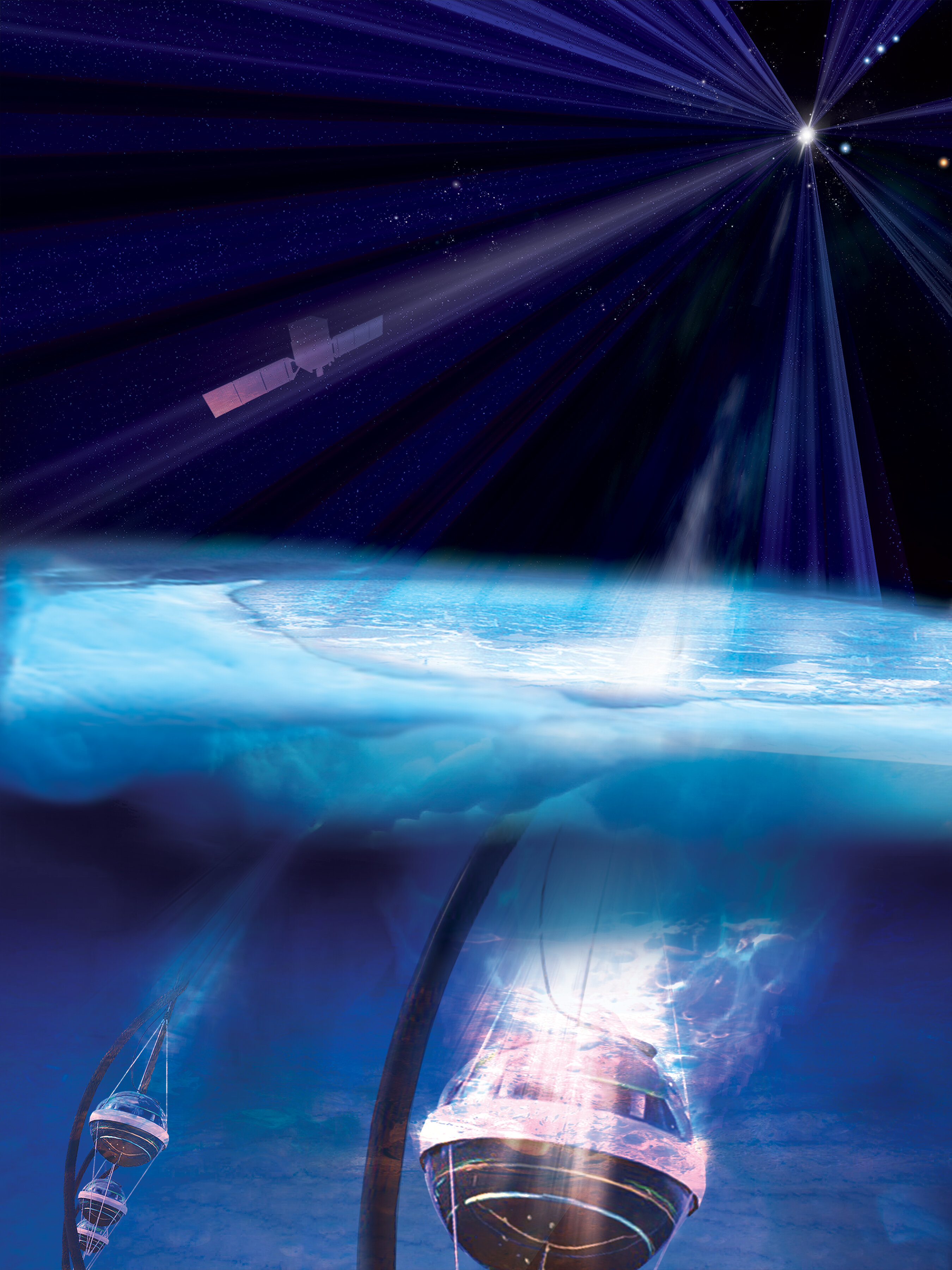Unveiling the Quantum Realm: Multiplicity and the Interconnected Nature of Reality

Introduction:
The quantum realm, a realm of subatomic particles and phenomena, has captivated the curiosity of scientists for over a century. Its enigmatic characteristics, such as superposition and entanglement, challenge classical notions of reality and hint at a profound interconnectedness in the universe.
Multiplicity and Superposition:
One of the most striking features of the quantum realm is the concept of superposition. Quantum particles can simultaneously exist in multiple states or locations, creating a situation where they are neither definitively one nor the other. This multiplicity defies the common understanding of distinct and separate objects.
Entanglement and Non-locality:
The phenomenon of entanglement further deepens the interconnectedness of quantum particles. When two or more particles become entangled, they are linked together in such a way that the state of one instantly affects the state of the others, even if they are physically separated by vast distances. This non-local connection suggests that information and influence can transcend the limitations of space and time.
Observer Effect and the Role of Consciousness:
The observer effect, which demonstrates the influence of observation on quantum systems, is another intriguing aspect of the quantum realm. When a particle is observed, it collapses into a specific state, as if it had only that state all along. This raises questions about the role of consciousness in shaping reality and the relationship between the observer and the observed.
Implications for Our Understanding of Reality:
The quantum realm reveals a reality that is fundamentally different from our classical perceptions. It suggests a universe where multiplicity, non-locality, and interconnectedness are inherent aspects of existence. These insights challenge the notion of a separate, objective world and instead point towards a unified, interpenetrating field of energy and information.
Applications and Potential:
The understanding of the quantum realm has far-reaching implications. It has led to the development of quantum computing, cryptography, and other advanced technologies. Additionally, it has inspired new approaches in fields such as psychology and spirituality, exploring the potential for quantum processes to influence human experience and consciousness.
Conclusion:
The unveiling of the quantum realm has profoundly expanded our understanding of reality. It has revealed a world of multiplicity, interconnectedness, and non-locality, blurring the lines between separate entities and suggesting a deep unity at the very foundations of existence. As we continue to explore the quantum realm, we may gain deeper insights into the nature of our own consciousness and the interconnected web of life that surrounds us.## Unveiling The Quantum Realm: Multiplicity And The Interconnected Nature Of Reality
Executive Summary:

Quantum physics unveils a profound reality where particles exist in multiple states simultaneously and are interconnected in ways that defy classical understanding. This multiplicity and interconnectedness challenge our conventional notions of reality and open up new avenues for scientific exploration and technological advancements.

Introduction:
The realm of quantum physics transcends our everyday experience, revealing a world governed by fundamental principles that challenge our classical intuitions. At the subatomic level, particles exhibit peculiar behaviors such as wave-particle duality and quantum superposition, leading us to question the very nature of reality. This article explores the transformative insights provided by quantum physics, delving into the concepts of multiplicity and interconnectedness that permeate this enigmatic realm.
Frequently Asked Questions (FAQs):
1. What is quantum superposition?
Answer: Quantum superposition is a fundamental property of quantum particles where they can exist in multiple states or locations simultaneously until observed, violating classical expectations of exclusivity.
2. How does entanglement defy classical physics?
Answer: Entanglement is a quantum phenomenon where two or more particles become correlated in such a way that their states become inextricably linked, regardless of the distance between them.
3. What is the significance of quantum indeterminacy?
Answer: Quantum indeterminacy, often referred to as Heisenberg’s uncertainty principle, limits our ability to precisely measure both position and momentum of a particle, highlighting the inherent uncertainty at the quantum level.
Subtopics:
1. Duality of Matter and Energy
- Wave-particle duality: Particles exhibit both wave-like and particle-like properties, depending on the experimental setup.
- Complementarity principle: The wave and particle aspects of a particle are complementary and cannot be observed simultaneously.
- Matter waves: Particles can behave like waves, exhibiting interference and diffraction phenomena.
2. Quantum Superposition
- Multiple states: Particles can exist in multiple states, such as spin up and spin down, simultaneously.
- Measurement collapses superposition: Observation of a particle forces it to assume a single, definite state, collapsing the superposition.
- Schrödinger’s cat paradox: A thought experiment that highlights the paradoxical nature of quantum superposition.
3. Quantum Entanglement
- Non-locality: Entangled particles share a common fate, regardless of the distance separating them.
- Correlation: The states of entangled particles are correlated, violating classical expectations of independence.
- Bell’s theorem: Experiments have experimentally confirmed the non-local nature of entanglement, challenging classical theories.
4. Quantum Indeterminacy
- Heisenberg’s uncertainty principle: It is impossible to simultaneously determine both the position and momentum of a particle with absolute precision.
- Uncertainty limits: The more precisely one quantity is measured, the less precisely the other can be known.
- Wave function: The wave function of a particle describes its probabilistic distribution of states, rather than providing a definite value.
5. Quantum Information and Technology
- Quantum computing: Quantum computers harness the power of quantum superposition to perform computations exponentially faster than classical computers.
- Quantum cryptography: Quantum principles enable unbreakable encryption protocols, enhancing cybersecurity.
- Quantum sensors: Quantum sensors have the potential to revolutionize scientific research and medical diagnostics with unprecedented sensitivity.
Conclusion:
Quantum physics presents a mind-boggling departure from classical physics, revealing a reality where multiplicity and interconnectedness are fundamental principles. By embracing these concepts, we gain an enhanced understanding of the fabric of the universe and open up new horizons for scientific exploration and technological innovation. The quantum realm serves as a testament to the boundless wonders of the cosmos and the transformative power of human inquiry.
Relevant Keyword Tags:
- Quantum physics
- Multiplicity
- Quantum superposition
- Quantum entanglement
- Quantum indeterminacy
- Quantum information
- Quantum computing


